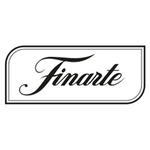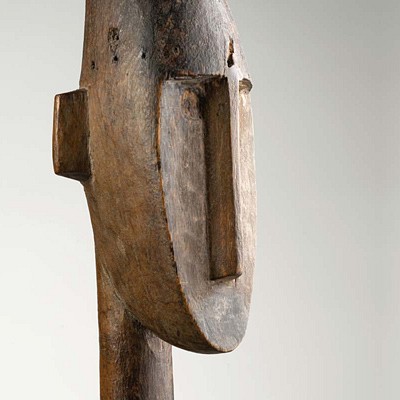Baga (Guinea Conakry)
About Seller
Via Sarpi 6
Milano
Italy
Finarte’s core business is the organization of public auctions of works of art and specialty items. Sellers, buyers and investors can rely on our experts for technical and financial advice on works of art, photography, design objects, jewelery, books, wines, vintage fashion and classic cars. In Marc...Read more
Two ways to bid:
- Leave a max absentee bid and the platform will bid on your behalf up to your maximum bid during the live auction.
- Bid live during the auction and your bids will be submitted real-time to the auctioneer.
Bid Increments
| Price | Bid Increment |
|---|---|
| EUR€0 | EUR€10 |
| EUR€200 | EUR€20 |
| EUR€400 | EUR€50 |
| EUR€1,000 | EUR€100 |
| EUR€2,000 | EUR€200 |
| EUR€5,000 | EUR€500 |
| EUR€10,000 | EUR€1,000 |
| EUR€50,000 | EUR€5,000 |
| EUR€100,000 | EUR€10,000 |
| EUR€200,000 | EUR€20,000 |
About Auction
Oct 14, 2020
MILAN Via Paolo Sarpi, 6 (get direction) SESSION (lots 1-77) Wednesday 14 October 2020 5:30 p.m. Finarte info@finarte.it
- Lot Description
Bright dark patina wood, period cracks, metal tacks
H 83 cm
Yoke mask. Region on the Atlantic Coast. This represents the goddess of fertility (Nimba), the protector of pregnant women and the goddess invoked by those who are infertile. It emerges in procession during organised rituals to obtain good fortune for the fields when harvesting rice and grain, through its evocative force. The face seems to be a fantastical interpretation of the mother goddess’ female face, while the hooked nose represents the male symbol.Also called a shoulder mask, this model seems to be unique, a stylistic invention that does not appear in the artistic production of many African groups.This one in particular was sculpted following uncharacteristic designs for the classical Baga tradition. Indeed, the various parts of the head and body have curved profiles which are usually sharp edges in the most common traditional works. Here, the weight and measurements are made for a man. The face is constructed on staggered levels and the hooked nose hangs over the extended, pointed chin. Its lacks eyes and a mouth, the ears protrude in a shape that resembles the letter ‘C’, and it has hanging ring earrings. The hairstyle is formed of a large lock that joins up on the skull’s curve.The whole head is decorated with a series of incisions in geometric shapes, and the face is adorned with European-made iron tacks. The large, drooping bosom evokes the image of an African woman who has been breastfeeding for a long time because she has had the gift of fertility. There are wide fractures in the wood and signs of prolonged use, which undeniably demonstrates how old this model is.
LITERATURE
Reproduced in: - VENTURI LUCA M. “Anime antiche, arte negra, da una raccolta di sculture dell’Africa occidentale” BSI Bank, Lugano 2002, fig. 77; - LAMP FREDERICK “Art of the Baga” The Museum for African Art, New York 1996; - BERLINER DAVID “Mémoires religieuses Baga” Musée Barbier-Mueller, Geneva 2013; - CHRISTIE’S “Arts d’Afrique et d’Océanie” Paris, asta del 22 novembre 2017, lotto 39;
(*) Ralph Nash. Born in Germany in 1928, Nash was a famous designer and stylist who established himself by makinghigh fashion female footwear. Still young, he opened a company in South Africa and frequently travelled to Europe and New York in the USA. In 1961, he moved to London and also pursued hisinterest for African art. He traded with the best-known European and American art dealers, in particular, and bought African works from the famous gallery owner John Klejman (1906-1995), Madison Avenue, New York. In 1924, he purchased a Dan mask from gallery owner Paul GuiIlaume (1891-1934) which, on 22nd November 2017, Christie’s put up for auction in Paris for 400,000 / 600,000 euros (lot 39). The Baga people are a small group of almost 50,000 individuals located along the Atlantic coast. Divided into various subgroups, they live in Guinea-Bissau, Guinea (Conakry), Sierra Leone and Liberia, all marine regions where it is difficult to moor. These four-legged Baga sculptures were worn as a yoke mask. The wearer would enter and, with his body, would hold up its weight, using his hands to help himself hold onto the stocks inserted into the holes in the legs. It can sometimes reach the height of 125cm and could weigh up to 60kg. So that the wearer could see, there are several slits in the middle of the breasts. A long cloak made of cloth and rafia fabric, tied behind his neck, covered the whole sculpture to hide the wearer. Those present at the ceremony ought only to see the head and bosom.The sculpture is divided into two distinct parts: the enormous head and the four-legged body, with the thick cylindrical neck uniting the two parts. These works’ aesthetic quality is remarkable. In this tradition, which established itself in the mid-nineteenth century, the protruding head becomes enormous, as do the bosom and ears. A long double-crested hairstyle resumes at the skull’s curve. The whole body is marked with incisions in geometric patterns, shown by the presence of European-made iron tacks.fractures from use;Condition
- Shipping Info
-
Upon written request of the Buyer, Finarte may arrange the packaging and shipment of the lot, on condition that the Buyer: (a) has fully paid the Total amount due; (b) provides Finarte with any certificate of free circulation or export licence or any statement and/or certification required for such purpose. Unless otherwise agreed with the Buyer: (a) packaging and shipment expenses shall be for the account of the Buyer, who may request, at least twenty-four (24) hours before the beginning of the auction, estimates of costs should the Buyer decide to entrust Finarte with the packaging and shipping of the lot; (b) the insurance coverage concerning any risk for (even partial) loss and/or damage caused to the lot during transport must be agreed between the Buyer and the carrier without any liability for Finarte; (c) the cost of insurance shall be for the account of the Buyer. The shipment and packaging of the lot to the Buyer shall be entirely at the risk and expenses of the Buyer and Finarte shall in no event be held liable for any action or omission of packaging workers or carriers.
-
- Buyer's Premium



 EUR
EUR CAD
CAD AUD
AUD GBP
GBP MXN
MXN HKD
HKD CNY
CNY MYR
MYR SEK
SEK SGD
SGD CHF
CHF THB
THB













